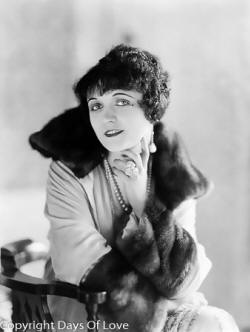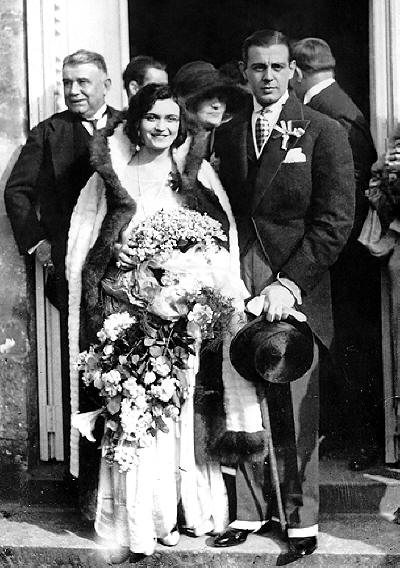

Husband Serge Mdivani, Partner Margaret West
Queer Places:
Vaganova Academy of Russian Ballet, Ulitsa Zodchego Rossi, 2, Sankt-Peterburg, Russia, 191023
Chateau de Seraincourt, 3 Rue du Château, 95450 Seraincourt, France
907 5th Ave, New York, NY 10021, Stati Uniti
7707 Broadway St, San Antonio, TX 78209
Calvary Cemetery, 4201 Whittier Blvd, Los Angeles, CA 90023, Stati Uniti
 Pola
Negri (born Barbara Apolonia Chałupec; 3 January 1897 – 1 August 1987) was a
Polish stage and film actress who achieved worldwide fame during the silent
and golden eras of Hollywood and European film for her tragedienne and
femme fatale roles.
Pola
Negri (born Barbara Apolonia Chałupec; 3 January 1897 – 1 August 1987) was a
Polish stage and film actress who achieved worldwide fame during the silent
and golden eras of Hollywood and European film for her tragedienne and
femme fatale roles.
Raised in the Congress Kingdom of Poland, Negri's childhood was marked by several personal hardships: After her father was sent to Siberia, she was raised by her single mother in poverty, and suffered tuberculosis as a teenager. Negri recovered, and went on to study ballet and acting in Warsaw, becoming a well-known stage actress there. In 1917 she relocated to Germany, where she began appearing in silent films for the Berlin-based UFA studio. Her film performances for UFA came to the attention of Hollywood executives at Paramount Pictures, who offered her a film contract.
Negri signed with Paramount in 1922, making her the first European actor in history to be contracted in Hollywood.[1] She spent much of the 1920s working in the United States appearing in numerous films for Paramount, establishing herself as one of the most popular actresses in American silent film. In the 1930s during the emergence of the sound film, Negri returned to Europe where she appeared in multiple films for Pathé Films and UFA, and also began a career as a recording artist. She would make only two films after 1940, with her last screen credit in Walt Disney's The Moon-Spinners (1964).
Negri spent her later life largely outside the public sphere. She became a naturalised U.S. citizen in 1951, and spent the remainder of her life living in San Antonio, Texas, where she died of pneumonia in 1987, aged 90.
Negri's first marriage was with Count Eugeniusz Dąmbski, and would prove to be short lived. Negri married Dąmbski in St Mary's Assumption Church in Sosnowiec on 5 November 1919, thus becoming Countess Apolonia Dąmbska-Chałupiec, having long since dropped the forename Barbara. After a long separation period, Negri and Dąmbski's union was dissolved in 1922.[48]

The wedding of Serge Mdivani and Pola Negri
After she began working in the United States, she made headlines and gossip columns with a string of celebrity love affairs, most notably with film stars Charlie Chaplin, Rod La Rocque, and Rudolph Valentino. Negri had met Chaplin while in Germany, and what began as a platonic relationship there became a well publicized affair and marriage speculation which received the headline, "The Queen of Tragedy To Wed The King of Comedy."[49] The relationship soured, and Negri became involved for a time with actor Rod La Rocque, who appeared as her leading man in Forbidden Paradise (1924). Negri met Rudolph Valentino at a costume party held by Marion Davies and William Randolph Hearst at the San Simeon estate and was reportedly Valentino's lover until his death in 1926. She caused a media sensation at his New York funeral on 24 August 1926, at which she "fainted" several times and, according to actor Ben Lyon, arranged for a large floral arrangement, which spelled out "P-O-L-A," to be placed on Valentino's coffin.[50] The press dismissed her actions as a publicity stunt. At the time of his death and for the remainder of her life, Negri would claim Valentino was the love of her life.[51]
Negri soon married again, to the Georgian self-styled "Prince" Serge Mdivani. This action caused public opinion in the United States to sour against her because it happened so quickly after Rudolph Valentino's death. Negri and Mdivani were married on 14 May 1927 (less than nine months after Valentino's death); shortly after she became pregnant, and Negri, who always wanted a child, started taking better care of her health and even considered retiring from movies in order to be a housewife and mother. However, she reportedly suffered a miscarriage.[39] She grieved the loss of her child for the rest of her life.[39] On 2 April 1931 they divorced.[52]
While residing at the Ambassador Hotel in New York in April 1932, Negri performed with Russ Columbo in George Jessel's variety revue at the Schubert Theatre and was briefly involved with Columbo. After her film, A Woman Commands, premiered in Hollywood, Columbo performed Negri's signature song "Paradise" with his orchestra and dedicated the song to her. Columbo also recorded and released the song as a 78 rpm single that year with slightly altered lyrics, and the single became a huge sensation with audiences across the country.[53]
When Negri returned to the United States in the early 1940s, she became close friends with Margaret West, an oil heiress and vaudeville actress whom she had originally met in the 1930s. The two became housemates, sharing a beachfront home in Los Angeles with Negri's then-88-year-old mother, and later in Bel Air.[54] Negri, who remained a devout Catholic in her later life, spent her time raising funds for Catholic charities with both her mother and West.[54] On 12 January 1951, Negri became a naturalized citizen of the United States.[44] After the death of Negri's mother in 1954 of pancreatic cancer, she and West relocated from Los Angeles to San Antonio, Texas, in 1957.[45] Negri would live with West until the latter's death of heart failure in 1963.[55] Negri moved out of the home she had shared with West into a townhouse located at 7707 Broadway in San Antonio, where she spent the remainder of her years, largely out of the public eye.
Some scholars, such as Rudolph Valentino biographer Emily Leider, have suggested that Negri was bisexual, and that she and West were romantic partners.[56] Negri biographer Sergio Delgado contests this, though he notes in his 2016 book Pola Negri: Temptress of Silent Hollywood, that there is "strong anecdotal evidence" that Negri was bisexual.[57]
Pola Negri died on 1 August 1987, aged 90. Her death was caused by pneumonia; however, she was also suffering from a brain tumor, for which she had refused treatment. Dr. Juan Nieto, a physician from San Antonio, Texas pronounced her death. At her wake at the Porter Loring Funeral Home in San Antonio, her body was placed on view wearing a yellow golden chiffon dress with a golden turban to match. Her death received extensive coverage in her hometown newspapers San Antonio Light,[58] and San Antonio Express-News,[59] and in publications such as Los Angeles Times[60][61] and Variety magazine.[62][63]
Negri was interred in Calvary Cemetery, East Los Angeles next to her mother, Eleonora, who died in 1954 from pancreatic cancer.[64] As Negri had no children or siblings, she left most of her estate to St. Mary's University in Texas, including a collection of memorabilia and several rare prints of her films. St. Mary's University also set up a scholarship in her name.[6] In addition, a generous portion of her estate was given to the Polish nuns of the Seraphic Order; a large black and white portrait hangs in the small chapel next to Poland's patron, Our Lady of Częstochowa, in San Antonio, Texas.[63]
My published books: